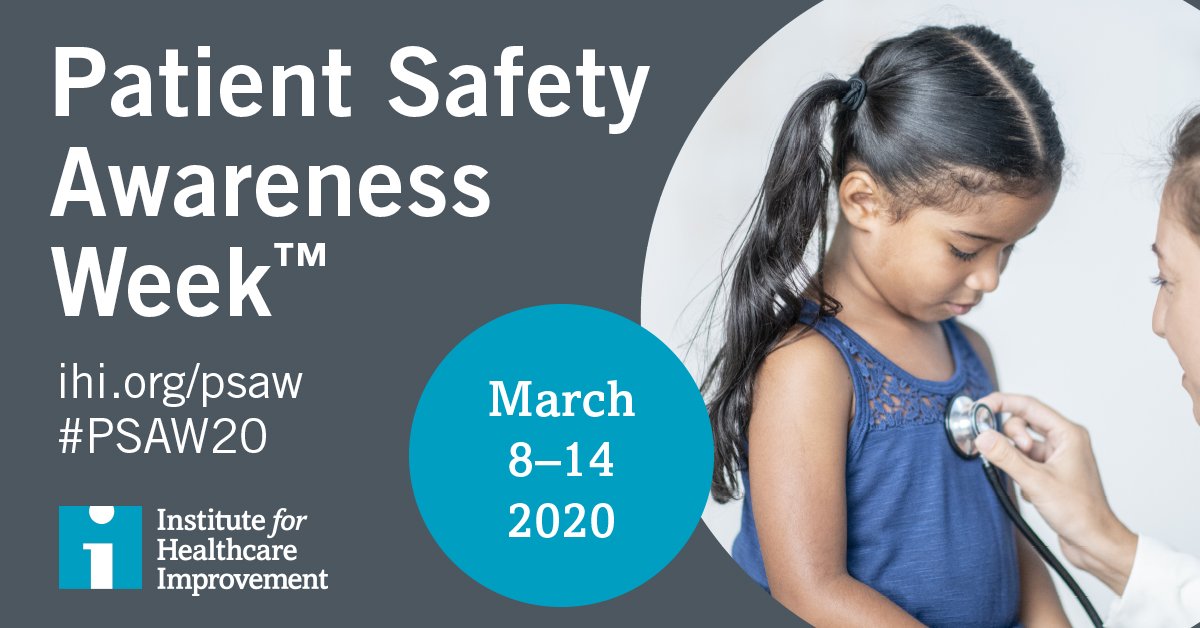National Patient Safety Week 2020
By Conexus MedStaff - Posted Mar 4, 2020

March 8 – 14th is National Patient Safety Week in the US. Patient Safety Awareness Week is an annual recognition event intended to encourage everyone to learn more about health care safety.
There are many different definitions of the word safety, but in general all encompass the prevention of harm and preservation of wellbeing. Harm can occur to people (physical, psychological, social, financial, and legal), as well as to organisations (legal, financial, loss of resources, reputation). Preventing harm in the healthcare setting is a legal necessity and is everyone’s responsibility.
The Occupational Safety and Health Act was passed in 1970 and it’s mission is to ensure employers provide their employees with a safe working environment that is (as far as possible) free from risk of harm. The Occupational Safety and Health Administration (OSHA) was also created from the Act, and it has the authority to both set and enforce workplace standards. Employers and employees both have responsibilities under OSHA for maintaining safety. Failure to comply with OSHA can result in personal sanctions such as the revocation of your nursing license and being sued, and organisational sanctions like fines and litigation.
Ways you can help keep yourself, your patients, their families, your colleagues, and your organisation safe from harm are to:
- Comply with OSHA standards: Adhere to policies and procedures both within the clinical area and outside – needle stick prevention policy, fire safety policy, social media policy, uniform policy to name but a few
- Attend all mandatory training
- Use personal protective equipment provided for tasks, strict handwashing
- Use other equipment that minimises risk such as hoists so long as you have been trained
- Ensure safety during medication administration – follow the rights of medication administration, perform the additional interventions required for high alert medications
- Use risk assessments to foresee patient safety issues such as pressure injury development and falls risk, and implement recommended interventions to prevent harm
- Communicate effectively with all members of the multidisciplinary team involved in the care of a patient
- Report all sentinel events, clinical incidents, accidents and near misses so lessons can be learned
- Involve patients and families in care planning and delivery – encourage questions, develop therapeutic relationships to relieve anxiety
- Communicate effectively with patients and families – consider health literacy, use medical translators if required, ensure health promotion and self-care instructions are understood
- Be ready to take on the day – never go to work under the influence of alcohol or drugs, ensure adequate rest time between shifts, try to ensure you sleep well by exercising or meditating, meet your nutrition and hydration requirements and eat a balanced diet.
Ways organisational leaders can help keep patients and their families, and employees safe are:
- Comply with OSHA standards
- Provide a workplace where exposure to hazards are minimised and safety is promoted
- Providing employees with all of the necessary training to perform their job
- Implement risk management controls – creating policies and procedures by which staff must comply
- Provide personal protective equipment for staff to safely undertake their tasks
- Ensuring adequate allocation of resources, including staff and physical resources that minimise risk
- Creating a “just” culture – perform root cause analysis on clinical incidents to find the real cause of an incident, instead of scapegoating staff who have made a mistake
Further resources on National Patient Safety Week are available from:
- The Institute for Healthcare Improvement: www.ihi.org (resources for your organisation)
- Center for Patient Safety: www.centerforpatientsafety.org (resources for your organisation))
- American Society for Health Care Risk Management: https://www.ashrm.org/resources/patient-safety-week (activities, podcasts)



